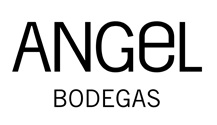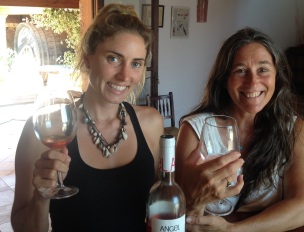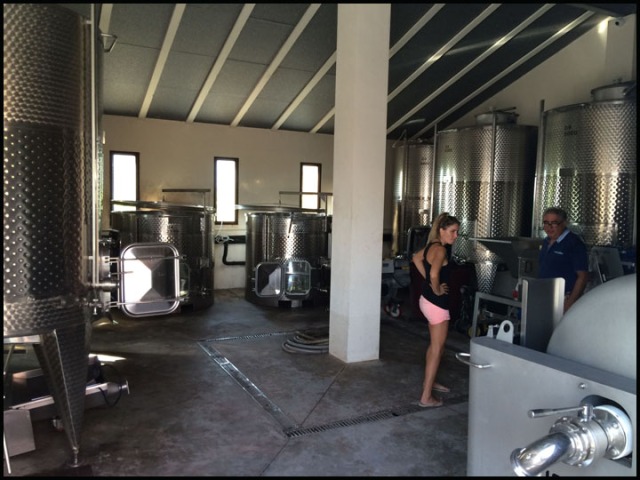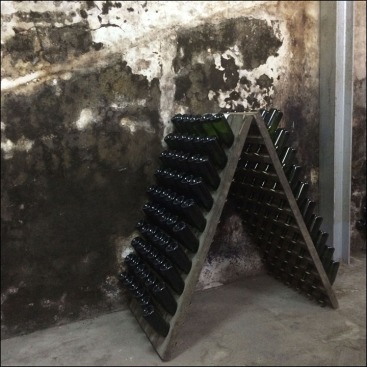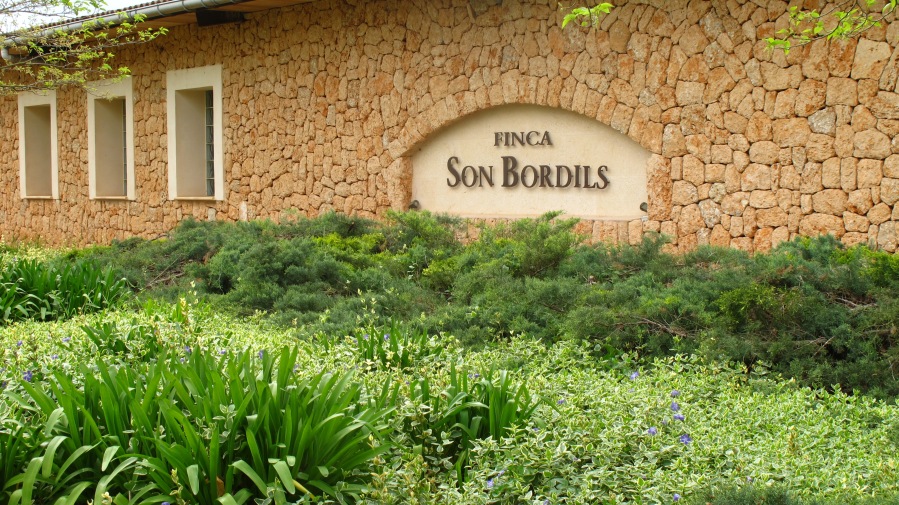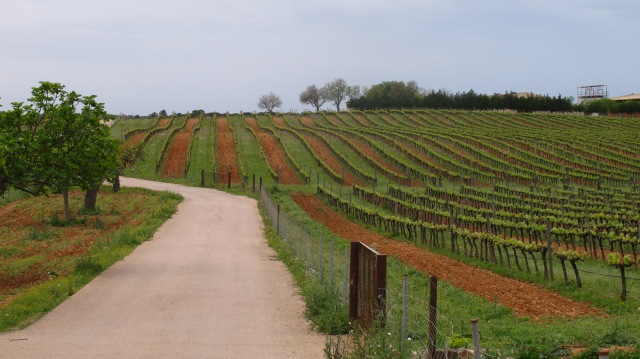“Excellence through passion and commitment to each varietal”

www.sonprim.com
+34 971 872 758
Sencelles, Mallorca, Spain

Son Prim sits elegantly in the center of its vineyards. A hub of wine production and sales, it is also set up beautifully for tastings and cuisine pairings. The winery was founded in 2002 by a family originally from Valencia, and their first release was in 2004. Now their son Jaime works with them, currently taking over their marketing and business needs. The varietals they grow are Merlot, Cabernet Sauvignon, Syrah, and they recently planted Chardonnay for the first time. Members of Vi de la Terra, they produce 50-60,000 bottles per year, depending on the harvest. They sell all of their wines online through their website, and through a distributor. 40% of their wines are exported to Switzerland and Denmark, and they have a small market in Japan and the United States.

We entered through the big heavy wooden door to be greeted only by wine bottles elegantly on display. As we took in our surroundings we became excited! The tasting area is new – finished and inaugurated last year. Natural light was the first thing that struck us, unlike many Spanish buildings, this room is wall to wall windows, with stunning views of their vineyards and the Mallorcan countryside. This spacious room features a huge fireplace with seating area, and a large open stainless steel kitchen for chef prepared meals and pairings.

Out came a smiling woman, Marianne, who introduced herself and asked us how many of their wines we would like to try today? Exuberant to the end we blurted out “All!” Smiling, she asked us where we would like to sit for our tasting. We chose the shady veranda, and sat outside at a big wooden table facing the ripening grapes; heavenly! Beside us stood an ancient and traditional wine press from here on the island; we enjoyed the wonderful union of modern and tradition here at Son Prim.
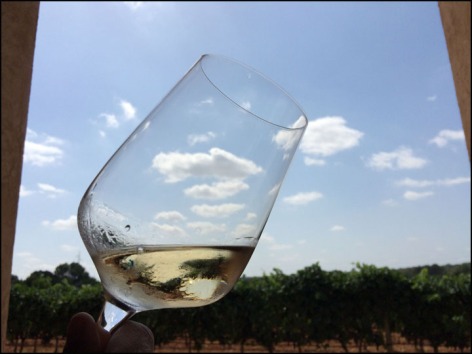
Marianne poured the first tasting, a refreshing white made from red grapes! Please see our tasting notes for more details on the wines we tasted.

Between pours, Marianne came and went, talking to the vineyard workers who were already culling the vines, answering questions, providing masks, conducting business as usual. We asked her what her connection to the winery was, and she told us she first came to Son Prim just to help out her friends temporarily. The work never ended, and now she is an integral part of the daily running and routine of this evolving winery.

Pouring, Marianne told us that for 2015, they expect to buy 15% of their grapes from other local vineyards, and the rest will be their own grapes. All grapes are kept in separate tanks so they can understand which is best. Believing in the virtues of each grape, they produce all single variety wines except for one coupage called Cup, which varies each year depending on the harvest. In 2014 they produced no white or rosé because they weren’t good enough for their standards (they make their white wine from red grapes), though their reds decidedly were. They use only natural French cork, and we learned that the Spanish word for cork, and the cork tree, is Alcornoque; a great word!
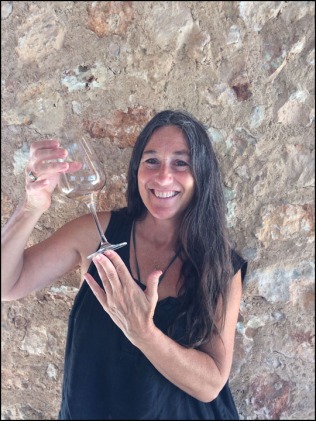
On a side note, we have yet to pin down the proper uses of the terms coupage and blend, as well as the terminology for multi-varietal grapes fermented together to make a wine, compared to wines fermented separately and then blended to create a new wine; and again compared to what we were told earlier that technically a coupage is a wine made mainly from a grape like Manto Negro, then supported with a structured wine like Cabernet Sauvignon to give the desired finishing strengths. It seems whenever there is more than one grape it is casually called a blend or a coupage, but we will get to the bottom of this mystery of semantics!
After tasting all of their wines, we found them to be bright and good, carefully and solidly produced with no surprises in aroma or flavor. They express consistently in the middle of the palate, differently than Castell Miquel wines did, but with the same intentional constancy.

After slowly enjoying each pour and discussing its attributes, we were taken on the physical tour. Marianne went and found owner/son Jaime for this part (what a privilege!). She stayed with us as well, and we all enjoyed our exploration and exchanges, making this tour one of the best experiences ever on our Mallorca Wine Trail! Jaime led us through the back door to the original bodega rooms (the new part was an extension) and showed us the stainless steel fermenting area. With indicative candor, Jaime told us that one of the mono-varietal wines in tank was not good enough for them, and they were now looking into what they might do with it, as they will not be selling it as a Son Prim wine. We love this commitment to excellence!
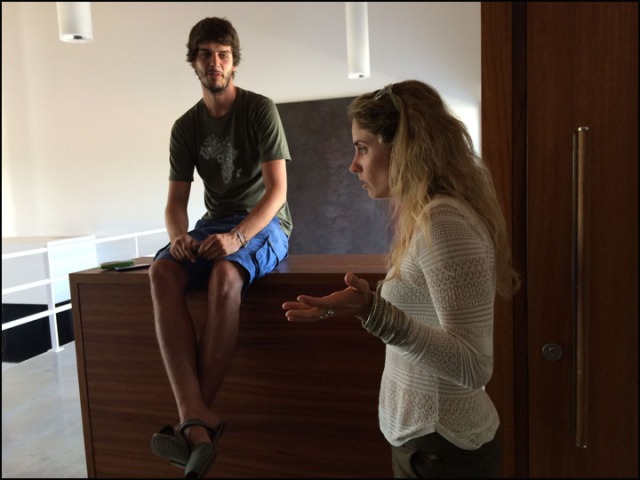
Enjoying our doggedly enthusiastic self-education, Jaime asked us with a wry smile, “Have you tasted the grapes of the wines you drink? No? Then how the hell do you expect to understand the wine that is being made from them?” Then he whisked us out and we all jumped down into the vineyards in search of early maturing grapes to taste!

In the Merlot area, Jaime told Tawnee to pick a green grape and then to pick a ripe one, and said “I bet you can’t taste the green one without getting the sourpuss face!” Ha ha! He was right! Jaime showed us that the grape seeds are what tell them when the grape is ready for harvest. They are white when young and turn brown and wood-like when the grape is ripe. He showed us that all the Merlot grapes were still a little green, but in two weeks the team would start tasting the grapes to see how this varietal was shaping up for picking.

Next we went walking through the beautiful rows to find the Cabernet Sauvignon grapes, and Jaime gave us some select dark grapes to taste. Ooohhh the flavor was so much better! They were already sweet now, but he told us they would be the last to harvest because a good Cab wants a sweet grape and a long time fermenting out the sugar. He told us that just before the Cabernet grapes turn red, they cut out half of the crop so the plant focuses on what is left.

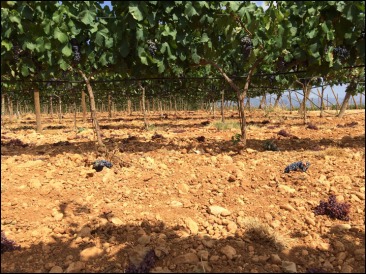

What an experience to walk through the vineyards, taste the grapes and see the vines, notice the differences in the leaves of the grapes that we just tasted. A complete experience that created a very personal relationship for these wines.

We learned that the bodega has gone through a few different wine masters from three different countries, and the family has learned much from each of them. With these changes they have seen production changes as well; the biggest of those is that now they pick all grapes by hand because when they used machine harvesting methods the grapes were always broken and oxygenating, which changed the flavor of the wine markedly and made batches irregular. Now they pick into small 15-kilo crates so no weight crushes the bottom grapes, and move them to cool rooms so no fermentation begins prematurely.
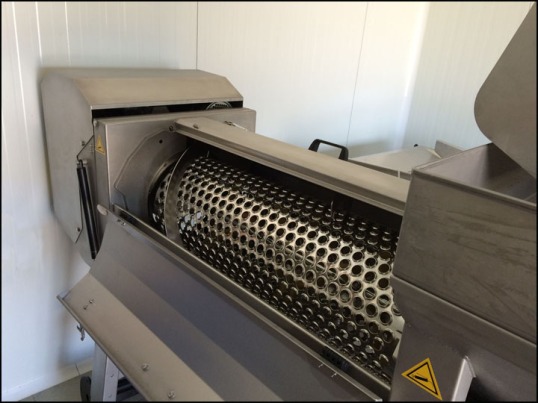

They hand sort, manually de-stem, and then put them into stainless tanks for five days at very low temperature so they marinate with the skin and seeds (called maceration) but no fermentation takes place before the fifth day. Next they allow the temperatures to rise so the yeasts activate. With reds they allow 10-12 days of alcoholic fermentation with skin and seeds – tasting and keeping track of the tannins so the wine will end up dry but not astringent. During this time they use a process called ‘pump over’ which circulates the wine and breaks the skin/seed hat, which furthers maceration and extraction of tannin and color. Finally they press the solids, and remove them, then with most of the wines it is off to barrel!

Next we were taken down to their barrel room, which is always one of our favorite places to see. We were told that at Son Prim they do not do any fermentation in barrel – it is only for airing and aging. They use French oak barrels primarily, some American, and a little Hungarian; but are thinking of phasing out the Hungarian now. Even in the barrel room there is quite a lot of natural ambient light because of small slits in the top where glass allows light in from the tasting room. Excellent harmony between the architecture and its natural vineyard surroundings!

We ended the tour back in the modern addition, up in the airy mezzanine offices. Here we learned about the different bottle names: a Magnum is 1.5 Liters, a Balthazar is 12.0 Liters, and a Melchior is 18 Liters!

Son Prim was a wealth of knowledge for us – we feel so privileged that they wanted to help us on our journey to become informed! They really shared their magic, not just in facts but also in enthusiasm and commitment! Clearly it’s part of this winery’s recipe for success! Thank you Marianne and Jaime! Walking to our car, bottles in hand, we realized that for future wine tasting forays, we need a cooler in the trunk! – you might too!

Merlot, oh Merlot
you are a very sour little grape
with too much skin
and bitter seeds!
But with age and attention,
your wine is a staple and gift!

Directions:
When driving from Inca towards Sencelles you will see vineyards and the sign for Son Prim on your left hand side. It is on the final curve before you arrive in Sencelles. You can not miss it!
See Wines Tasted at Son Prim: Click Here
### Son Prim ###



